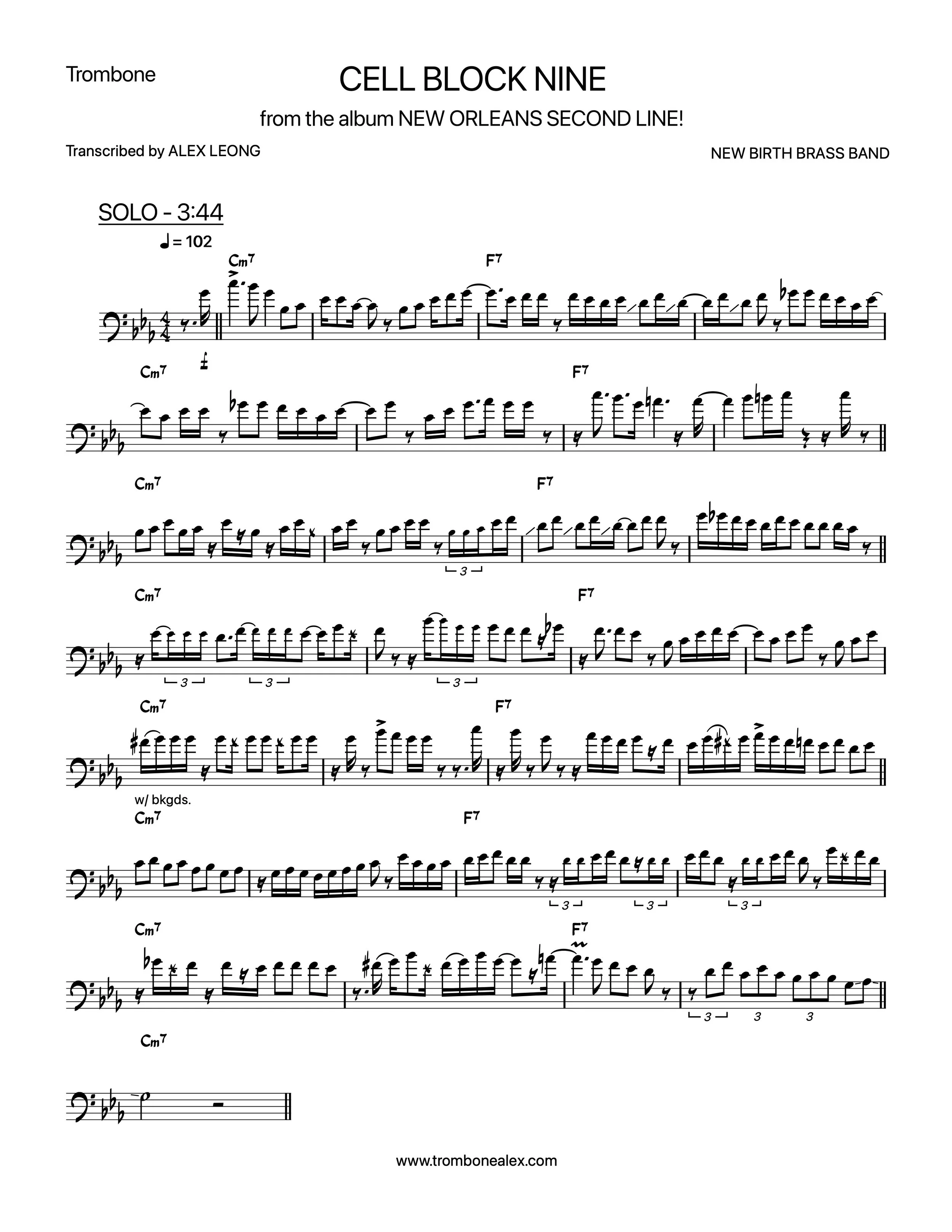"Cell Block Nine" - New Birth Brass Band
“Cell Block Nine” (PDF) from the New Birth Brass Band album, New Orleans Second Line!
Despite the multiple recordings of this tune, there remains a gap in the documented origins of “Cell Block Nine.” Not to be confused with, although perhaps inspired by, the Leiber & Stoller song “Riot in Cell Block Number 9” that describes the institutional violence between state authorities and prisoners, researcher Marvin McNeill suggests in “Get It How You Live”: Locating Affect, Social Bonding, and Resiliency in the Music of the TBC Brass Band of New Orleans, Louisiana that “Cell Block Nine” and other brass band parade tunes “represent and reflect the black musicians’ feelings toward such social constructions as mass incarceration, poverty, police brutality, and racism.” (51) While both tunes make reference to the harsh living conditions, the first wears the experience as an individual medallion while the more recent composition speaks of a community being separated by outside forces; more remarkably, the public performances of “Cell Block Nine” are inherently in protest of the systemic violence suggested in its lyrics.
The music of “Cell Block Nine” utilizes various latin motifs, such as the habanera rhythmic patterns, the intervallic motion within melodies, and the overall minor ii-V7 harmony. Although the trombone solo refrains from screaming in the upper register of the horn, as often used in other forms of latin jazz, the economic use of chromaticism between the b5, the dominant, and the b6 suggest that there’s more depth to the solo than just bluesy pentatonics. Obviously, any additional help with identifying who is playing this trombone solo would be greatly appreciated.
Recommended reading: Roll With It: Brass Bands in the Streets of New Orleans by Matt Sakakeeny. Published by Duke University Press.
